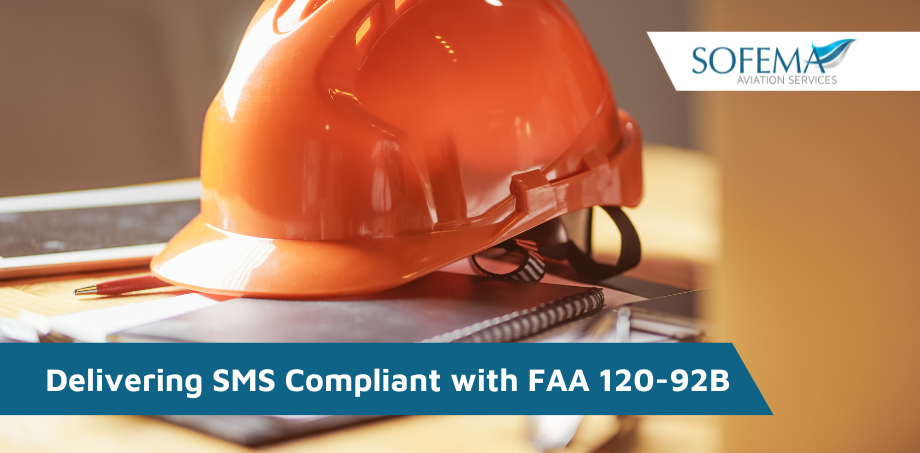SMS for Aviation Service Providers – process review by Sofema Aviation Services (SAS) www.sassofia.com considering the four components of an SMS.
The benefits of an effective SMS
- To promote a culture of total safety.
- To encourage everyone in an organization to think, behave, and act with complete safety in mind.
- Enables the operator to create a systematic way to categorize hazards and manage risks effectually.
SMS Components
1. Safety Policy — Establishes senior management’s commitment to continually improve safety; defines the methods, processes, and organizational structure needed to meet safety goals.
- Establishes management commitment to safety performance through SMS
- Establishes clear safety objectives and commitment to manage those objectives
- Defines methods, processes, and organizational structure needed to meet safety goals
- Establishes transparency in the management of safety
o Fully documented policy and processes
o Employee reporting and resolution system
o Accountability of management and employees
- Builds upon the processes and procedures that already exist
- Facilitates cross-organizational communication and cooperation
2. Safety Risk Management (SRM) — Determines the need for, and adequacy of, new or revised risk controls based on the assessment of acceptable risk.
- A formal process within the SMS composed of:
o Describing the system
o Identifying the hazards
o Assessing the risk
o Analyzing the risk
o Controlling the risk
- The SRM process may be embedded in the processes used to provide the product/service
3. Safety Assurance (SA) — Evaluates the continued effectiveness of implemented risk control strategies; supports the identification of new hazards.
- SMS process management functions that systematically provide confidence that organizational outputs meet or exceed safety requirements
- AVS SMS has a dual safety assurance focus:
o AVS organizations
o Product/service providers
- Ensures compliance with SMS requirements and FAA orders, standards, policies, and directives
o Information Acquisition
– Audits and evaluations
– Employee reporting
o Data Analysis
o System Assessment
- Provides insight and analysis regarding methods/opportunities for improving safety and minimizing risk
- Existing assurance functions will continue to evaluate and improve service
4. Safety Promotion — Includes training, communication, and other actions to create a positive safety culture within all levels of the workforce.
- Safety promotion activities within the SMS framework include:
o Providing SMS training
o Advocating/strengthening a positive safety culture
o System and safety communication and awareness
o Matching competency requirements to system requirements
o Disseminating safety lessons learned
- Everyone has a role in promoting safety
Next Steps
Follow this link to our Library to find & Download related documents for Free.
Sofema Aviation Services www.sassofia.com & Sofema Online www.sofemaonline.com offer Safety Management System Training as Classroom, Webinar or Online. For additional details, please visit our websites or email team@sassofia.com
Tags:
aviation, aviation safety, Risk Management, Safety Assurance, Safety Risk Management, SRM, FAA, SMS, Hazards, Aviation SMS, Aviation Risk




